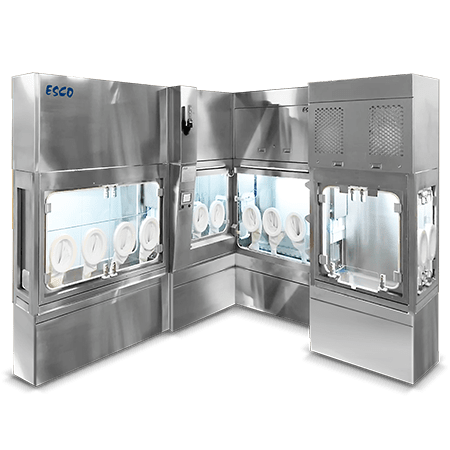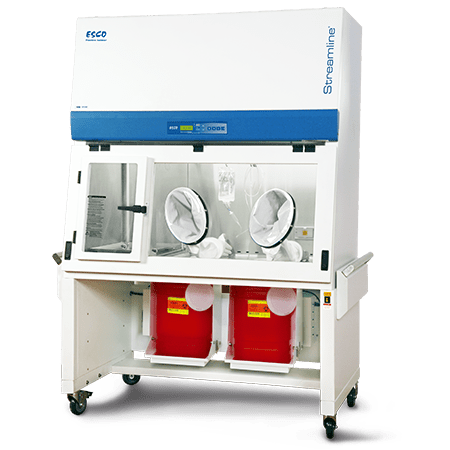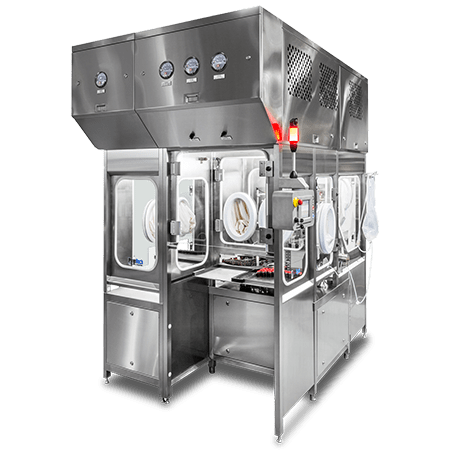The closed RABS is an intermediate solution between isolators and open RABS. A closed operation RAB provides a higher level of contamination control because the RABS barrier doors remain closed from the point of the last bio-decontamination, through initial set-up through processing. These systems typically use transfer systems that are similar to isolator type transfer systems that are closed and dock with the RABS.
Closed design RABs have a dedicated air handling system that provides down-flow air that circulates inside physical barriers, together with the provision of fresh air make up and ducted exhaust systems. Materials transfer devices are either a fully closed system, (e.g. alpha-beta rapid transfer ports, and/or devices that connect or interface) are under aerodynamic barrier protection and remain closed to the surrounding environment during transfer procedures. Closed-design RABs may also include a gaseous decontamination system.
Since the system controls the full airflow (inlet and outlet), allowing the correct pressure to enter, it can be a suitable equipment for handling or processing slightly toxic products. These systems cannot not be used for highly toxic products. However this can be considered as the right technology to be applied when a slightly potent/toxic product is to be manipulated.
Just like isolators, even closed RABS internally assure a “class A” environment, being the surrounding area classified as “class B."
Advantages of cRABS are:
Easy installation, also on existing machines;
Easy to validate (air flow, air classification, doors interlocks);
Possibility to downgrade the production area to class B;
Humidity and temperature inside the Closed-RABS can be controlled adopting a dedicated HVAC;
Possibility to recycle the air used inside, saving HVAC energy consumption;
Surrounding production area must be class B (with an isolator it can be downgraded to the less expensive class C);
Applications:
Potent Filling Line Isolator
Aseptic Formulation
Contained powder handling
Potent Formulation
Related Products








